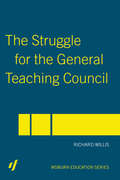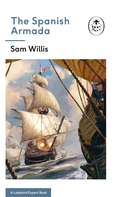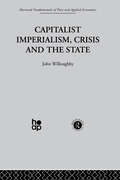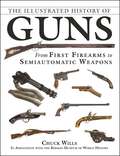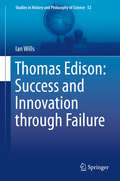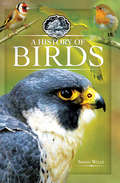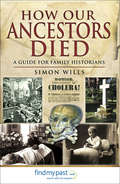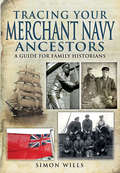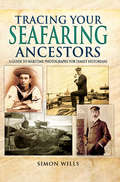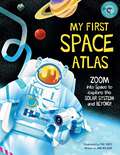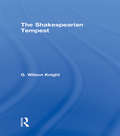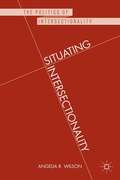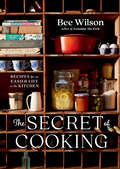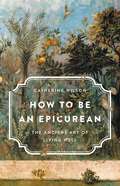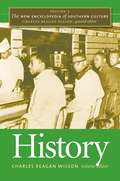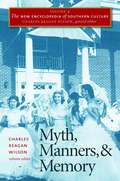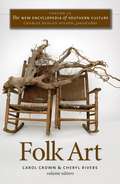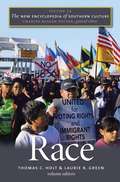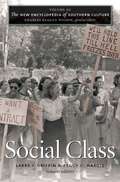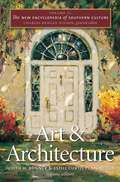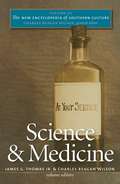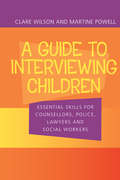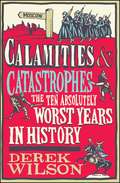- Table View
- List View
The Struggle for the General Teaching Council (Woburn Education Ser.)
by Richard WillisThis book chronicles the history of the struggle to promote a self-governing body for the teaching profession from its early problems at the start of the twentieth century right through to the establishment of the General Teaching Council of England in 2000. It also explores the interest groups and policy makers who impeded its achievement and the attitude of teacher unions and the teachers themselves to the establishment of such a body.The book will be of interest to academics, researchers and historians, as well as postgraduate students.
The Spanish Armada: A Ladybird Expert Book (The Ladybird Expert Series #30)
by Sam WillisPart of the ALL-NEW LADYBIRD EXPERT SERIES.____________Why did the Spanish launch their Armada on England?How did Francis Drake counter the Spanish threat?And why were so many ships lost at sea?In 1585 Spain was the most POWERFUL Empire in the known world.As tensions between PROTESTANT England and CATHOLIC Spain rose . . . SPAIN decided to INVADE ENGLAND. And launched the SPANISH ARMADA This raises the question: how did England manage to overthrow the Spanish invasion? Was it luck or judgement? Discover the answers and more inside Sam Willis's Ladybird Expert - The Spanish Armada, the thrilling and accessible account that explains what happened, who the key figures were and the tactics, triumphs and failures on both sides . . .
Handbook for Itinerant and Resource Teachers of Blind and Visually Impaired Students
by Doris Willoughby Sharon DuffyProvides suggestions for teachers of the visually impaired
Capitalist Imperialism, Crisis and the State (Fundamentals Of Pure And Applied Economics Ser. #Vol. 7)
by J. WilloughbyHow valid is the Marxian theory of imperialism? This book traces the historical development of the theory of imperialism, the internationalisation of capital and theories of capitalist nation-state formation
The Illustrated History of Guns: From First Firearms to Semiautomatic Weapons
by Chuck Wills The Berman History Robert A. SadowskiFor the first time in paperback, a photographic history of civilization, as seen through the world's most deadly and fascinating firearms.The Illustrated History of Guns is a comprehensive look at the tools of battle. To craft this book, more than five hundred photographs of genuine specimens were specially commissioned from the six-thousand-piece collection of the Berman Museum of World History. The weapons featured span a period of close to four thousand years, ranging from Ancient Greece to World War II, and from the Crusades in Europe to the US Civil War. It features a wide array of diverse treasures, including the traveling pistols of Confederate president Jefferson Davis, a royal Persian scimitar with 1,295 rose-cut diamonds and rubies, and a single 11-carat emerald set in gold, first owned by Shah Abbas I of Persia and given in tribute to Catherine the Great. The Illustrated History of Guns also offers information on weapons innovators, including Alexander Forsyth, Eliphalet Remington, Samuel Colt, Sergei Mosin, the Mauser brothers, Hiram Maxim, John Browning, Richard Gatling, John T. Thompson, John Garland, Feodor Tokarev, Oliver Winchester, and Mikhail Kalashnikov. With unparalleled historical perspective and background on persons significant to the development and advancements of weapons technology or military strategy, The Illustrated History of Guns belongs on the shelf of every history buff and firearms enthusiast.
Thomas Edison: Success and Innovation through Failure (Studies in History and Philosophy of Science #52)
by Ian WillsThis book develops a systematic approach to the role of failure in innovation, using the laboratory notebooks of America's most successful inventor, Thomas Edison. It argues that Edison's active pursuit of failure and innovative uses of failure as a tool were crucial to his success. From this the author argues that not only should we expect innovations to fail but that there are good reasons to want them to fail. Using Edison's laboratory notebooks, written as he worked and before he knew the outcome we see the many false starts, wrong directions and failures that he worked through on his way to producing revolutionary inventions. While Edison's strengths in exploiting failure made him the icon of American inventors, they could also be liabilities when he moved from one field to another. Not only is this book of value to readers with an interest in the history of technology and American invention, its insights are important to those who seek to innovate and to those who employ and finance them.
A History of Birds
by Simon Wills“Intriguing stories from the history of the human relationship with birds, including their symbolism in art, literature, religion, and folklore” (Booklist). Even the most well-informed wildlife enthusiast will be entertained by the stories and fascinating facts in this beautifully illustrated book. Our ancestors hunted, tamed, worshipped, and depicted birds, and even bestowed magical properties upon them. Why did ancient writers consider the sparrow a lustful creature? Which bird was killed and hung up to predict the weather? And what was an “arse-foot?” Wildlife photographer and history journalist Simon Wills explores the intriguing and at times bizarre stories behind our relationship with birds. Find out why robins feature on Christmas cards, and how Mozart was persuaded to keep a pet starling. What bird did Florence Nightingale carry around in her pocket? How did the blue tit get its name? Whole careers have been created around birds—from falconers to ostrich farmers—and birds have had great symbolic importance too. Discover, for example, why Raleigh bicycles carry a heron logo and why church lecterns are in the shape of an eagle. If you enjoy wildlife, then this book is full of surprises. Pigeons were trained to carry messages in wartime, but could gulls be taught to hunt U-boats? And which American president’s parrot started swearing at his funeral? “A pleasing and often illuminating book with many examples of historical connections with birds, from Queen Victoria’s parrots and the Prince of Wales’s feathers to Kellogg’s cockerel and recipes for flamingos.” —Bird Watch
How Our Ancestors Died: A Guide for Family Historians
by Simon WillsWhat were the principal causes of death in the past? Could your ancestor have been affected? How was disease investigated and treated, and what did our ancestors think about the illnesses and the accidents that might befall them? Simon Willss fascinating survey of the diseases that had an impact on their lives seeks to answer these questions. His graphic, detailed account offers an unusual and informative view of the threats that our ancestors lived with and died of. He describes the common causes of death—cancer, cholera, dysentery, influenza, malaria, scurvy, smallpox, stroke, tuberculosis, typhus, yellow fever, venereal disease and the afflictions of old age. Alcoholism is included, as are childbirth and childhood infections, heart disease, mental illness and dementia. Accidents feature prominently road and rail accidents, accidents at work and death through addiction and abuse is covered as well as death through violence and war.Simon Willss work gives a vivid picture of the hazards our ancestors faced and their understanding of them. It also reveals how life and death have changed over the centuries, how medical science has advanced so that some once-mortal illnesses are now curable while others are just as deadly now as they were then. In addition to describing causes of death and setting them in the context of the times, his book shows readers how to find and interpret patient records, death certificates and other documents in order to gain an accurate impression of how their ancestors died.
Tracing Your Merchant Navy Ancestors: A Guide for Family Historians (Tracing Your Ancestors)
by Simon WillsWhat was a merchant seamans life like in the past, what experiences would he have had, what were the ships like that he sailed in, and what risks did he run? Was he shipwrecked, rewarded for bravery, or punished? And how can you find out about an ancestor who was a member of the long British maritime tradition? Simon Wills concise and informative historical guide takes the reader and researcher through the fascinating story of Britains merchant service, and he shows you how to trace individual men and women and gain an insight into their lives. In a series of short, information-packed chapters, he explains the expansion of Britains global maritime trade and the fleets of merchant ships that sustained it in peace and war. He describes the lives, duties and tribulations of the generations of crews who sailed in these ships, whether as ordinary seamen or as officers, stewards, engineers and a myriad of other roles. In addition, he identifies the websites you can explore, the archives, records and books you can read, and the places you can visit in order to gain an understanding of what your seagoing ancestor did and the world he knew. Simon Wills practical handbook will be essential reading and reference for anyone who is keen to discover for themselves the secrets of our maritime past and of the crewmembers and ships that were part of it.
Tracing Your Seafaring Ancestors: A Guide to Maritime Photographs for Family Historians (Tracing Your Ancestors)
by Simon WillsPhotographs of your seafaring ancestors may tell you more about their lives than you realize, and Simon Willss helpful and practical guide shows you how to identify and interpret the evidence caught on camera. Since maritime roles have been so vital to Britains prosperity and military might, they are among the commonest professions depicted in photographs of our ancestors, and his handbook is the ideal introduction to them.Maybe your ancestor was a seaman in the Royal Navy, a ships captain, a steward on an ocean liner, or an officer in the naval reserves? This book shows you how to spot photographic clues to an individuals career. Whether your ancestor served in the merchant navy or the Royal Navy or in another seagoing role such as a fisherman, a lifeboatman, or even a ships passenger, Simon Willss book will be your guide.
My First Space Atlas: Zoom into Space to Explore the Solar System and Beyond (My First Atlas)
by Jane WilsherLand on the Moon, visit the International Space Station, take a space walk, and tour the planets in this fact-filled guide to the galaxy! Watch out for space junk and black holes! Filled with bright, bold, and scientifically accurate illustrations, fascinating inLayoution, and an interactive "Spot It" game throughout the book, My First Space Atlas will thrill aspiring astronauts and space explorers. FILLED WITH FACTS: Dozens of space facts for curious young space explorers. BOLD ILLUSTRATIONS: Astronauts, rockets, rovers, planets, and more are depicted in bright, colorful illustrations that accurately represent their key features and characteristics. EXPERT AUTHORITY: Created in collaboration with astrophysicist Dr Ben Maughan, My First Space Atlas &“space scientist approved&” and includes all the latest expert inLayoution. READ ALONE OR READ ALOUD: Independent readers will pore over the hundreds of fascinating facts about space, and emerging readers will love learning along with their favorite grown-up. PLAY THE "SPOT IT" GAME: "Can you find the camera on the Moon buggy?", "How many planets are in the Solar System?" There are clues and pictures on every spread to find out all sorts of space inLayoution.
Shakespearian Tempest - V 2
by G. Wilsin KnightFirst published in 2002. Routledge is an imprint of Taylor & Francis, an informa company.
Situating Intersectionality Politics, Policy, And Power
by Angelia R. WilsonA new generation of political science scholars who are comfortable employing intersectional analysis are emerging and their work hones in directly on the complexity of politics, governance and policy making in an increasingly small, technologically connected, ideologically nuanced, global Public Square.
The Secret of Cooking: Recipes for an Easier Life in the Kitchen
by Bee WilsonA culinary companion to simplify cooking while making it more enjoyable, The Secret of Cooking is packed with solutions for how to make life in the kitchen work better for you, whether you’re cooking for yourself or for a crowd. Do you wish you could cook more, but don’t know where to start? Bee Wilson has spent years collecting cooking “secrets”: ways of speeding cooking up or slowing it down, strategies for days when you are stretched for time, and other ideas for when you can luxuriate in kitchen therapy. Bee holds out a hand to anyone who wants doable, delicious recipes, the kind of unfussy food that makes every day taste better: quick feasts from a can of beans; fast, medium, and slow ragus; and seven ways to cook a carrot. Alongside thoughts on how to cook when you’re alone, with children, or just plain tired, Bee offers 140 recipes including: the simplest chicken stew even the pickiest of eaters (aka children) will love Zucchini and Herb Fritters, a Grated Tomato and Butter Pasta Sauce (with or without shrimp), and other ways of making your box grater work for you salads to savor, like a tuna salad with anchovy dressing leisurely projects like an Aromatic All-Purpose Curry Powder and quicker food for friends (try Bulgar and Eggplant Pilaf with pistachio and lemon) the loveliest red curry sauce you can make in your instant pot universal desserts, or those gluten-free and dairy-free sweets that you can serve no matter who comes over, like a Vegan Pear, Lemon, and Ginger Cake With advice on seasoning, cleaning up, and choosing the best equipment, Wilson reimagines modern cooking and brings the spark back into everyday meals. As Bee says, “There’s still magic in the kitchen, if you know where to look.” Shall we cook?
How to Be an Epicurean: The Ancient Art of Living Well
by Catherine WilsonA leading philosopher shows that if the pursuit of happiness is the question, Epicureanism is the answer Epicureanism has a reputation problem, bringing to mind gluttons with gout or an admonition to eat, drink, and be merry. In How to Be an Epicurean, philosopher Catherine Wilson shows that Epicureanism isn't an excuse for having a good time: it's a means to live a good life. Although modern conveniences and scientific progress have significantly improved our quality of life, many of the problems faced by ancient Greeks -- love, money, family, politics -- remain with us in new forms. To overcome these obstacles, the Epicureans adopted a philosophy that promoted reason, respect for the natural world, and reverence for our fellow humans. By applying this ancient wisdom to a range of modern problems, from self-care routines and romantic entanglements to issues of public policy and social justice, Wilson shows us how we can all fill our lives with purpose and pleasure.
The New Encyclopedia of Southern Culture: History
by Charles Reagan WilsonProviding a chronological and interpretive spine to the twenty-four volumes of The New Encyclopedia of Southern Culture, this volume broadly surveys history in the American South from the Paleoindian period (approximately 8000 B.C.E.) to the present. In 118 essays, contributors cover the turbulent past of the region that has witnessed frequent racial conflict, a bloody Civil War fought and lost on its soil, massive in- and out-migration, major economic transformations, and a civil rights movement that brought fundamental change to the social order. <P><P> Charles Reagan Wilson's overview essay examines the evolution of southern history and the way our understanding of southern culture has unfolded over time and in response to a variety of events and social forces--not just as the opposite of the North but also in the larger context of the Atlantic World. Longer thematic essays cover major eras and events, such as early settlement, slave culture, Reconstruction, the New Deal, and the rise of the New South. Brief topical entries cover individuals--including figures from the Civil War, the civil rights movement, and twentieth-century politics--and organizations such as the Southern Christian Leadership Conference, Daughters of the Confederacy, and Citizens' Councils, among others. Together, these essays offer a sweeping reference to the rich history of the region.
The New Encyclopedia of Southern Culture: Myth, Manners, and Memory
by Charles Reagan WilsonProviding a chronological and interpretive spine to the twenty-four volumes of The New Encyclopedia of Southern Culture, this volume broadly surveys history in the American South from the Paleoindian period (approximately 8000 B.C.E.) to the present. In 118 essays, contributors cover the turbulent past of the region that has witnessed frequent racial conflict, a bloody Civil War fought and lost on its soil, massive in- and out-migration, major economic transformations, and a civil rights movement that brought fundamental change to the social order. Charles Reagan Wilson's overview essay examines the evolution of southern history and the way our understanding of southern culture has unfolded over time and in response to a variety of events and social forces--not just as the opposite of the North but also in the larger context of the Atlantic World. Longer thematic essays cover major eras and events, such as early settlement, slave culture, Reconstruction, the New Deal, and the rise of the New South. Brief topical entries cover individuals--including figures from the Civil War, the civil rights movement, and twentieth-century politics--and organizations such as the Southern Christian Leadership Conference, Daughters of the Confederacy, and Citizens' Councils, among others. Together, these essays offer a sweeping reference to the rich history of the region.
The New Encyclopedia of Southern Culture: Folk Art
by Charles Reagan Wilson Carol Crown Cheryl RiversFolk art is one of the American South's most significant areas of creative achievement, and this comprehensive yet accessible reference details that achievement from the sixteenth century through the present. This volume of The New Encyclopedia of Southern Culture explores the many forms of aesthetic expression that have characterized southern folk art, including the work of self-taught artists, as well as the South's complex relationship to national patterns of folk art collecting. Fifty-two thematic essays examine subjects ranging from colonial portraiture, Moravian material culture, and southern folk pottery to the South's rich quilt-making traditions, memory painting, and African American vernacular art, and 211 topical essays include profiles of major folk and self-taught artists in the region.
The New Encyclopedia of Southern Culture: Race
by Charles Reagan Wilson Laurie B. Green Thomas C. HoltThere is no denying that race is a critical issue in understanding the South. However, this concluding volume of The New Encyclopedia of Southern Culture challenges previous understandings, revealing the region's rich, ever-expanding diversity and providing new explorations of race relations. In 36 thematic and 29 topical essays, contributors examine such subjects as the Tuskegee Syphilis Study, Japanese American incarceration in the South, relations between African Americans and Native Americans, Chinese men adopting Mexican identities, Latino religious practices, and Vietnamese life in the region. Together the essays paint a nuanced portrait of how concepts of race in the South have influenced its history, art, politics, and culture beyond the familiar binary of black and white.
The New Encyclopedia of Southern Culture: Social Class
by Charles Reagan Wilson Larry J. Griffin Peggy G. HargisThis volume of The New Encyclopedia of Southern Culture offers a timely, authoritative, and interdisciplinary exploration of issues related to social class in the South from the colonial era to the present. With introductory essays by J. Wayne Flynt and by editors Larry J. Griffin and Peggy G. Hargis, the volume is a comprehensive, stand-alone reference to this complex subject, which underpins the history of the region and shapes its future.In 58 thematic essays and 103 topical entries, the contributors explore the effects of class on all aspects of life in the South--its role in Indian removal, the Civil War, the New Deal, and the civil rights movement, for example, and how it has been manifested in religion, sports, country and gospel music, and matters of gender. Artisans and the working class, indentured workers and steelworkers, the Freedmen's Bureau and the Knights of Labor are all examined. This volume provides a full investigation of social class in the region and situates class concerns at the center of our understanding of Southern culture.
The New Encyclopedia of Southern Culture: Art and Architecture
by Charles Reagan Wilson Estill Curtis Pennington Judith H. BonnerFrom the Potomac to the Gulf, artists were creating in the South even before it was recognized as a region. The South has contributed to America's cultural heritage with works as diverse as Benjamin Henry Latrobe's architectural plans for the nation's Capitol, the wares of the Newcomb Pottery, and Richard Clague's tonalist Louisiana bayou scenes. This comprehensive volume shows how, through the decades and centuries, the art of the South expanded from mimetic portraiture to sophisticated responses to national and international movements. The essays treat historic and current trends in the visual arts and architecture, major collections and institutions, and biographies of artists themselves. As leading experts on the region's artists and their work, editors Judith H. Bonner and Estill Curtis Pennington frame the volume's contributions with insightful overview essays on the visual arts and architecture in the American South.
The New Encyclopedia of Southern Culture: Science and Medicine
by Charles Reagan Wilson James G. ThomasScience and medicine have been critical to southern history and the formation of southern culture. For three centuries, scientists in the South have documented the lush natural world around them and set a lasting tradition of inquiry. The medical history of the region, however, has been at times tragic. Disease, death, and generations of poor health have been the legacy of slavery, the plantation economy, rural life, and poorly planned cities. The essays in this volume explore this legacy as well as recent developments in technology, research, and medicine in the South. Subjects include natural history, slave health, medicine in the Civil War, public health, eugenics, HIV/AIDS, environmental health, and the rise of research institutions and hospitals, to name but a few. With 38 thematic essays, 44 topical entries, and a comprehensive overview essay, this volume offers an authoritative reference to science and medicine in the American South.
A Guide to Interviewing Children: Essential Skills for Counsellors, Police Lawyers and Social Workers
by Claire Wilson Martine PowellChildren may be witnesses to crimes or accidents, or suspected victims of abuse or neglect, or they may be involved in some form of legal action such as custody cases. In these situations, they may need to be interviewed formally, and if this is not done properly, incorrect or inadequate information may be recorded or the child's position may not be correctly represented later in court. In cases of child abuse, the child may not be the only witness, and the quality of their verbal evidence is critical.A Guide to Interviewing Children is a practical guide the evidential interviewing techniques needed by a range of professionals: social workers, forensic psychologists, lawyers, police and teachers. It outlines basic techniques, explains how to deal with children of different ages (from pre-school to fifteen years), how to deal with parents, the particular issues of sexual abuse, handling multiple interviews of one child and so on. It is written for an international readership, and will be more practical and cover a broader range of contexts than the other titles currently available.
Calamities & Catastrophes: The Ten Absolutely Worst Years in History
by Derek WilsonThey say that history is written by the winners. Not according to Derek Wilson. In this fascinating, revelatory book, Wilson tells the story from the point of view of the losers - collating a catalogue of calamities and catastrophes that have shaped our world more than historians tend to let on. In ten lucid and entertaining chapters, the author identifies the very worst years of human history, from the destruction of the Roman Empire in 541 to the immediate aftermath of the American Civil War in 1865, from the march on Leningrad in 1942 to the Vietnam War of 1968. Condensing two thousand years of war, plague, misrule and political villainy, he identifies the traitors, scumbags and villains, whose lust for power - and sometimes, sheer incompetence - brought such terror to their times. He delves into the natural forces beyond human control that have wiped out whole peoples. And, most of all, he shows how history has a horrible habit of repeating itself.
Calamities & Catastrophes
by Derek WilsonThey say that history is written by the winners. Not according to Derek Wilson. In this fascinating, revelatory book, Wilson tells the story from the point of view of the losers - collating a catalogue of calamities and catastrophes that have shaped our world more than historians tend to let on. In ten lucid and entertaining chapters, the author identifies the very worst years of human history, from the destruction of the Roman Empire in 541 to the immediate aftermath of the American Civil War in 1865, from the march on Leningrad in 1942 to the Vietnam War of 1968. Condensing two thousand years of war, plague, misrule and political villainy, he identifies the traitors, scumbags and villains, whose lust for power - and sometimes, sheer incompetence - brought such terror to their times. He delves into the natural forces beyond human control that have wiped out whole peoples. And, most of all, he shows how history has a horrible habit of repeating itself.has a horrible habit of repeating itself--one, he would counsel, we should make more of an effort to stop. Witty and caustic, educational yet diverting, Calamities & Catastrophes is a fast-paced, funny book for history buffs and casual readers alike.
